The Chinese M113
The CM-21 IFV was designed and manufactured by the Republic of China Armoured Vehicle Development Center, based on the M113 APC. The first prototype came out in 1979, but the definitive CM-21 only was introduced into service by 1982. With over 1,000 manufactured until 2009 plus variants, it is still today the bedrock of ROCS motorized infantry units.Now, the history of the Chinese Republic's Army is deeply linked with the US, as its main procurement source for practically 1950 to this day, although the 1980s new found friendship with Contintental China froze several transfers and pushed Taiwan to seek out other suppliers, notably in Europe, while at the same time develop its own arms industry. This led to several US-based designs such as the CM-21 Brave Tiger, a completely odd concept of main battle tank combining a M60 chassis, M48 Patton turret and M1 Abrams fire control system. On the infantry side, as procurement of M113 ceased, pushed the development of a domestic version also highly modified, called the CM-21.
To start this story let's have a look on Cold War ROCS use of the M113: Taiwan obtained 650 M113 APC in the late 1960s and early 1970s, many of ex-Vietnam use, and possibly ex South-Vietnamese vehicles. Another batch of M113A1 were also received in 1990. And Allegedly 225 with 20-30mm cannons. However the cooperation project with France to adopt the GIAT integrated 25mm turret variant was never achieved. Instead, the CM 21 family was developed. But to go to the origin of this we need to go back to 1967.
At the end of 1967 indeed, the U.S. Army involvement in Vietnam was total, and the help of the Republic of China for local operations support led to the signing of the "Third-Country Refurbishment Plan", refurbishing locally U.S. military equipment until the end of the Vietnam War instead of sending them back to the US. This made for shorter logistics and enabled the Taiwanese industry to be familiar with several types of equipments, including armored vehicles, accumulating a complete experience in more and more complex refurbishment, welding and spare parts manufacturing. This went to full vehicle assembly, fully reconditioned M113 armored vehicle notably.
By 1975 as the war in Vietnam was pretty much over, the Joint Logistics program established in 1967 became the "Wancheng Plant". The local complex delivered three brand new M113 bodies fitted with aluminum alloy armor plates, produced by the Taiwan Aluminum Corporation. Wancheng also created a local version of the M106, a 4.2-inch mortar carrier, later for production swapped to the locally made 63-type 120mm mortar. This led to the development of the CM-22A1 120mm mortar vehicle. Wancheng's second prototype reused the M24 light tank turret transplanted on a M113, moving the engine compartment to the rear. The company created a hybrid M113 light tank, which was not chosen for production. The third prototype was a conversion as a multi-rocket launcher (MLR), also not chosen although six other US-made M113s were modified the same way for more testings. Another Wancheng prototype created an upgrade for the Taiwanese M48A1 MBT, to the M48A5 standard. All this was done while working soon on the production and development of the CM21.
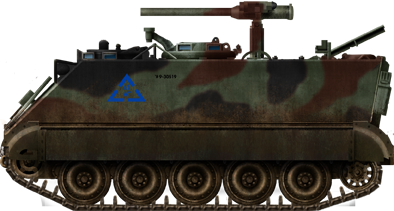
ROCS M113A2 with TOW
The idea of developing a local M113 was indeed quite obvious since Wansheng Plant had all the skills and capabilities to do so, and the process of creating a brand new model from scratch seemed obvious. However the ROCS staff wanted to improve of the basic design and drafted a new set of specifications in 1976. Side armur improvement, better visibility, better firepower on the move were already proposed for the M113 in the US, which led to the development of the M2 Bradley.
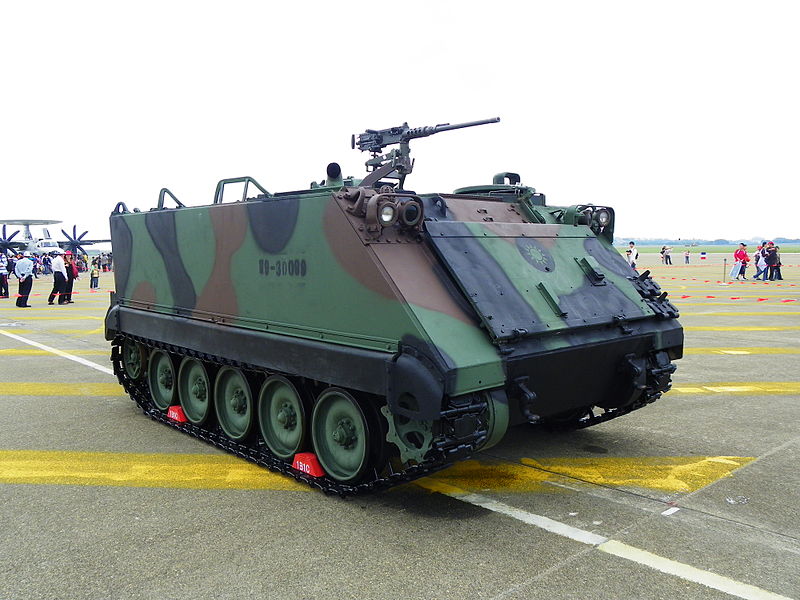
M113A2 in CCK Air Force Base
Construction of the CM-21
The basic CM-21 is the same M113 armored personnel carrier also fully made of welded aluminum alloy, created locally, and shares the same transmission system as the M113A1, with a reworked hull shape however, and a carrying capacity unchanged of 12 soldiers. The front and rear as well as the sides of the body are double-layered with hollow space armor. The interior is filled with polyurethane foaming to absorb bullets or shrapnel's heat energy. The external layer is still capable of stopping a 5.56 mm bullet. In addition no more than flat surfaces: The whole sides angles are now sloped, including the rear compartment, increasing artificially the armor thickness. This meant the CM-21 has better protection overall than the M113, but it makes it also heavier or around 350 kgs (Ibs), reducing both its mobility and amphibious bouyancy, since the CM-21 is also amphibious, without preparation. It keeps a trim vane on the nose, also acting as extra protection.The forward extra armor is enclosed, so not able to receive crew's personal items and haversacks, but it can be filled with various boxes and so technically, internal ERA. The forward side armor is composed of two large pieces bolted on and welded shut. The aft piece is much larger, up to the rear section. The latter is the most striking aspect of the vehicle. It's recessed over around 1.5m (), with two sights for the two ptstol port below allowing four infantry to fire on the move. The lower section is protected by a block of extra spaced armor, also bolted and welded.
The traditional four lifting ears are still bolted-welded on the same places as before. The roof did not saw too much changes. The position of the engine is enchange as well as the transmission, so the driver is still located to the forward right side seen from the front, with five periscopes and the hatch opening backwards. The commander/MG Gunner cupola is located behind, center to the axis, followed by the troop compartment.
The rear infantry compartment allows four infantry to be seated in a back-to-back manner in the center, thus enabling them to fire through the pistol ports. Both the chassis and bunks are classic and thus unprotected against mines. The front half of the infantry compartment however sees face-to-face seats.
Mobility
The CM-21 actually was equipped with two sorts of engines, outsourced in the USn, but with negociation for home production; The first one was a Perkins TV8-640 turbodiesel, and the second, original, was the Detroit Diesel 6v53. Both developed the same output of 210 hp (160 kW), with a Power/weight of 22.36 hp/t. This diesel was coupled with an Allison TX100-1 automatic gearbox transmission, with three forward gears and one reverse. The vehicle used the same original suspension system based on torsion bar on five road wheels, no return roller. Tracks and roadwheels, idlers and drives were all built locally.As for performances, the vehicle could cross 550 kilometers (300 mi) max range, and accelerate to a modest top speed on flat of 66 km/h. The CM-21 was heavier than the original M113 bnuit it had still the ability to float, crossing 1.5 meters deep water without preparation. Before th crossing, the driver started two bilge pumps and deployed the front trim vane. While in water, the tracks ensure propulsion. Like the M113 the CM-21 could be outfitted with rear external fuel tanks.
Armament
The basic firepower of the CM-21 is provided by the common 12.7mm Browning M2 heavy machine gun. The standard mount can be swapped for a 40mm Mk 19 automatic grenade launcher. However it could be provided also with a twin pintle to mount both the Browning M2 and Mk 19 AGL. The 25mm autocannon variant project with France never wrnt far.For active concealement, the CM 21 carries 8 smoke grenade launcher in two sets of four on the forward glacis. It is true also for the CM 22, 23, and CM 26. The CM-25 however possessed two setts of three. These electrically fired smoke grenade launcher needs to be reloaded by an exterior operator.
Main Variants
CM 21 A1
The CM-21 is the one currently in service. It seems it cannot be upgraded to the CM-21A2 Infantry Fighting Vehicle standard, made redundant anyway sincz the arrival of the CM-32 wheeled APC.CM 21 A2
The CM-21A2 is a modified version of inspired by the M1132A2. The engine's intake was to take air from the inside of the vehicle and the side armour is replaced with a bar armour to protect against shaped charges ATGMs. Plans to upgrade it as an infantry fighting vehicle, with the French GIAT Dragar 25 mm gun turret never passed approval.CM 22 Mortar carrier
This is the mortar carrier variant for 107mm/120mm mortar (similar to M106). Developed in 1987, production went on until 1999, with a modified ammo rack and different headlights. The crew compartment is setup to integrate the mortar, these are no firing ports, nor spaced armour so externally it looks lika an M106.CM 23 Mortar carrier

CM-23 Mortar Carrier at the infantry school in 2012 This is a variant of the CM-22, with an 81 mm mortar very close to the US M125 mortar carrier based on the M113.
CM 25 Missile Carrier
It is a true variant of the CM-21, resung the same hull but modified to fire TOW missiles. The passenger compartment is completely geared to store TOW missiles, while the quad-mounted smoke grenade launcher is now triple. There are no firing ports, but extra spaced armour filled with polystyrene. The ATGM mount is located on the roof and enable a 360° traverse. It's replacing in some unit the M113A1 TOW Launcher, which goes to reserve units. This version is also used by the Marine Corps.CM 26 CCV

CM-26 Armored Command Post in Chengkungling, 2011 The Command and Control Vehicle CM-26 is a command track derived from the CM-22, and it is similar to the American M577.
other variants (tested but not produced)
-CM 21 Flamethrower -CM 21 MLRS -CM 21 Artillery -CM 21 Ambulance (adopted as a sub-variant of the CM-21A1CM-27A1 Artillery Tractor
A completely new vehicle, with a longer chassis, new hull, new accomodations, etc. Will be treated on a standalone post as the ammunition carrier variant CM-24. This vehicle is unique to the Taiwanese Army.Service
The CM-21 equipped all motorized infantry batallions of the ROCA since 1983, and is still in service, pending gradual replacement by the much faster wheeled CM-32. So far it has not been deployed. Given the production rate of the CM-23 it's likely a large number of CM-21 would be still around in some unit until 2030. There are no upgrade program for it.CM-21 specifications | |
| Dimensions | 4.863 x 2.68 x 2.5m (15 ft 11.5 in x 8 ft 9.7 in x 8 ft 2 in) |
| Total weight, wt weapons | 12.7 tonnes (14.0 short tons; 12.5 long tons) |
| Crew | 2+12 (Driver, Cdr/Gunner, 12 infantry) |
| Propulsion | Perkins/Detroit diesel 210 bhp (see notes) |
| Suspension | Coil Springs |
| Top speed/water | 66 kph (xx mph) |
| Range | 550 km (300 mi) |
| Armament | Cal.50 12.7mm M2HB, see notes |
| Armor | STANAG 2 |
| Total production | 1000 in 1995 |
Links/sources
CM 21 on Military TodayCM 21 on Army-guide
On military factory
www.singtaonet.com
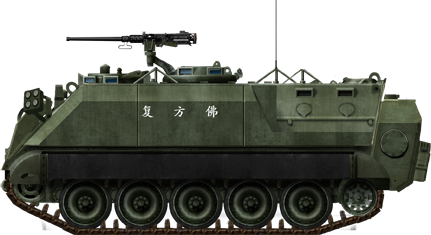
CM-21 in parade, plain green
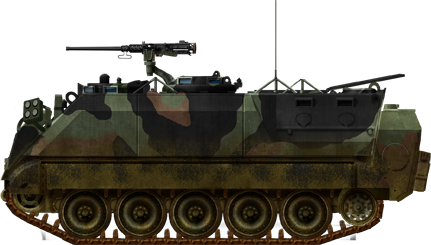
CM-21 camouflaged in active unit
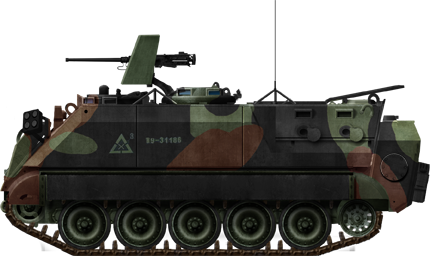
CM-21, same
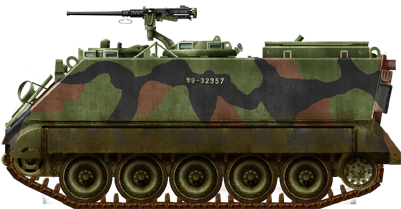
CM-23 Mortar Carrier
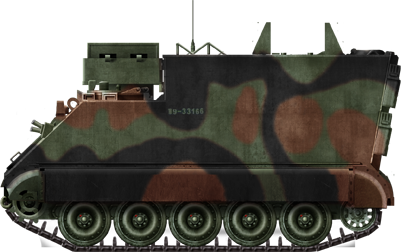
CM-26 CMT
Gallery
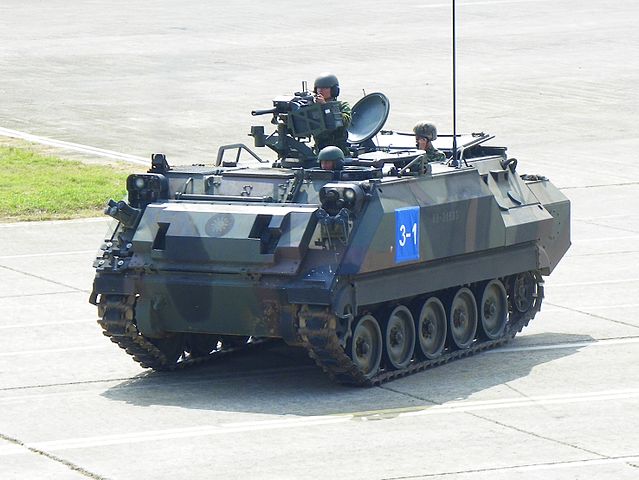
CM-21A APC left wing training 2011
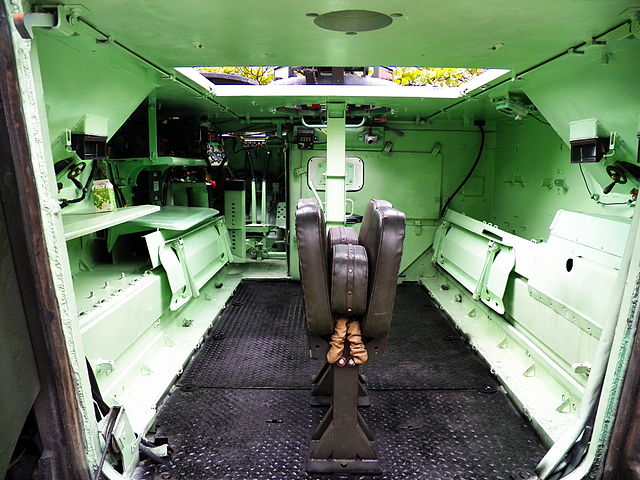
CM-21A Cabin interior
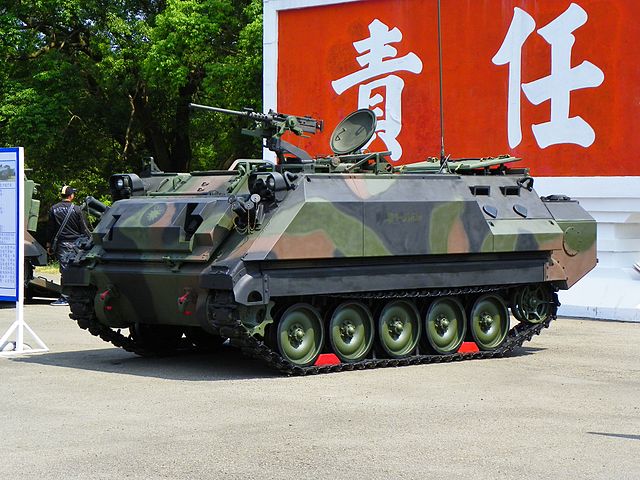
CM-21A at Chengkungling Ground, 2012
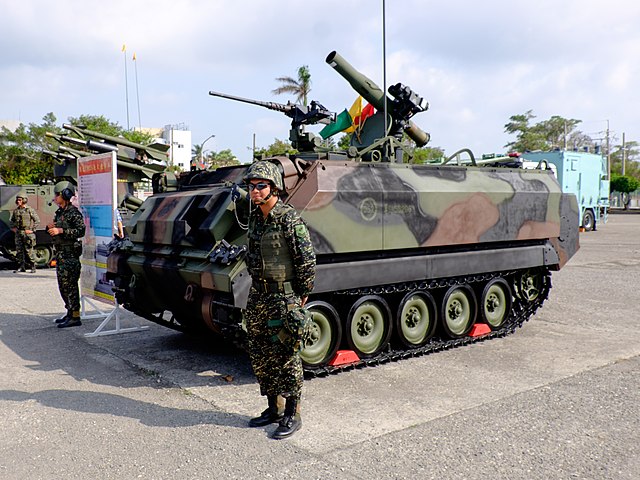
CM-25 at the Zuoying naval Base
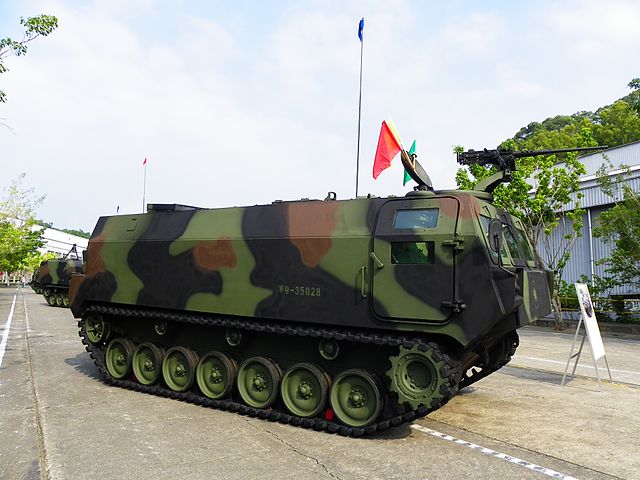
CM-24 display in Yue Kang road, 2012
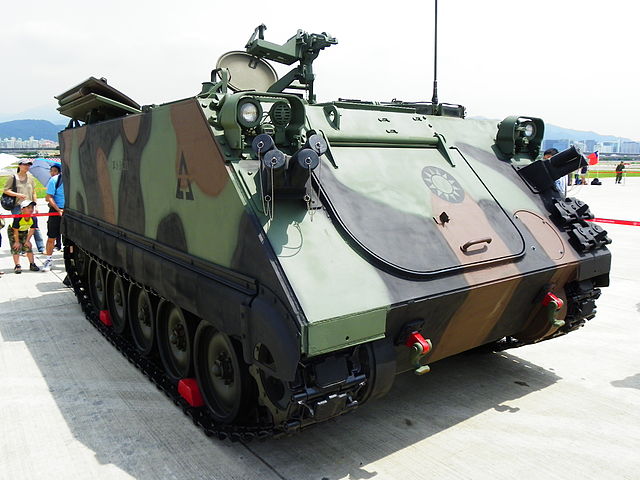
CM-22 Mortar Carrier at Songshan AFB 2011
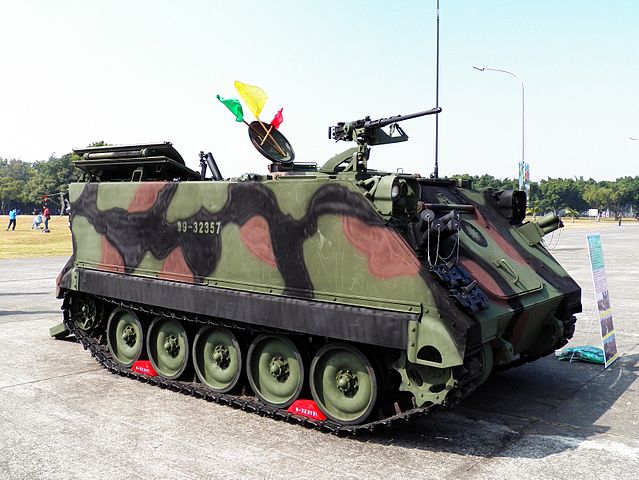
CM-23 Mortar Carrier, ROCA Infantry School 2012
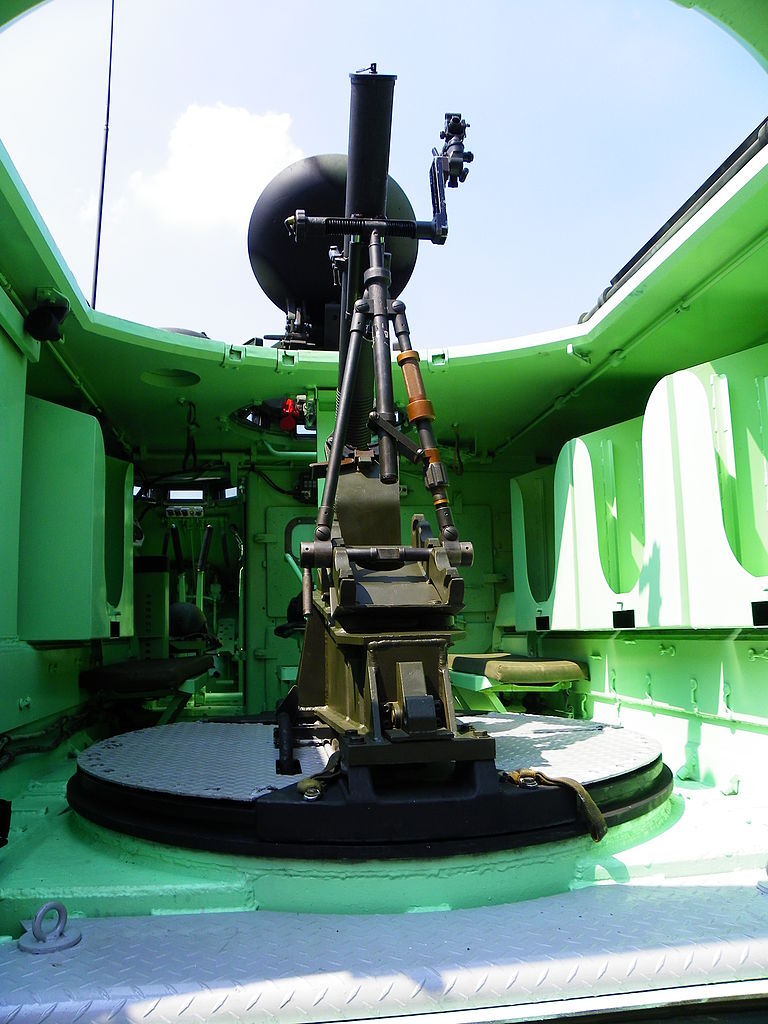
CM-23 mortar Carrier Interior
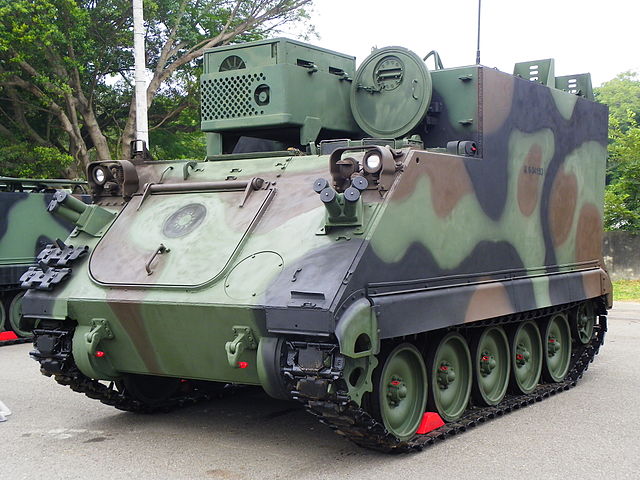
CM-26 Command Post
CM-26 Command Post cabin interior
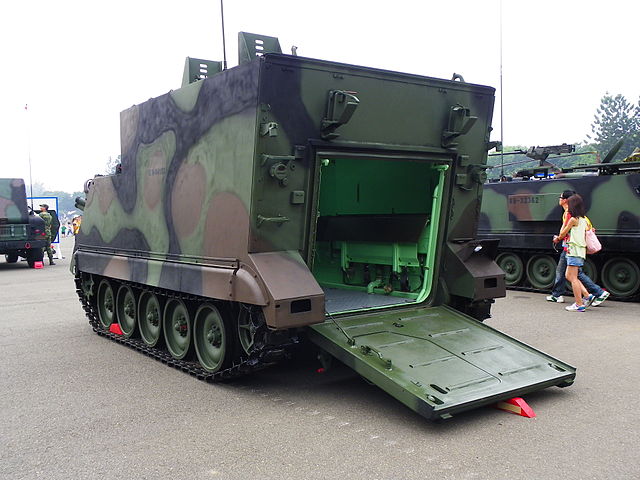
CM-26 CMP rear view
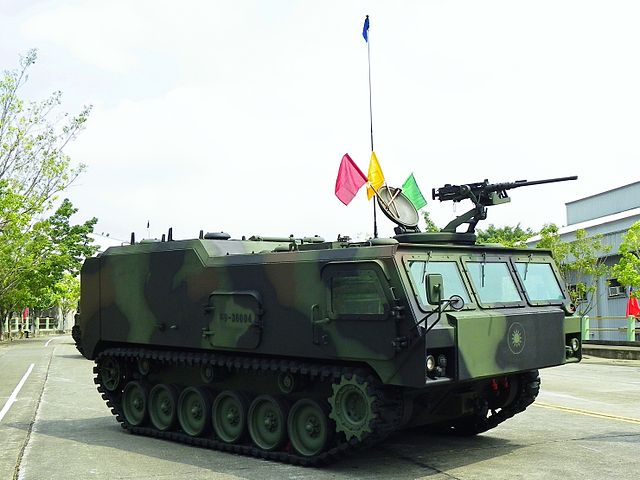
CM-27 on display at Yue Kang Road, 2012

Cold War Tanks


































Cold war tanks posters

Cold War Main Battle Tanks

Cold War Soviet Army
Museums, Movies, Books & Games
The Tanks and Armor in pop culture
Tanks and armored vehicles in general are only really grasped when seen first person: The mass, the scale, it's all there. Explore also the way tanks were covered in the movie industry, in books and in video games.Movies:
Best tanks movie on warhistoryonline.com
On imdb.com
On bestsimilar.com/
miltours.com
liveabout.com/
watchmojo.com
Video Games:
pcgamesn.com
historyhit.com
levvvel.com
vg247.com/best-tank-games
mmobomb.com/
alienwarearena.com

